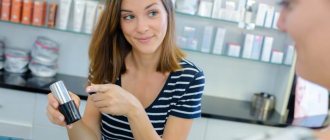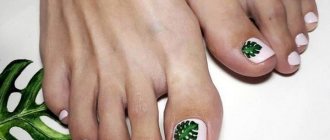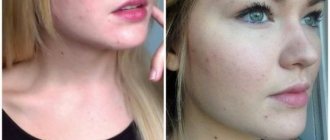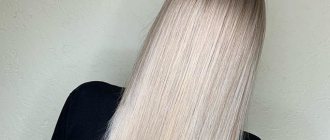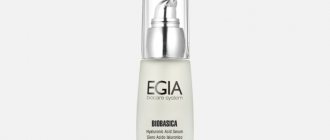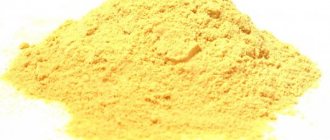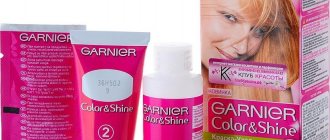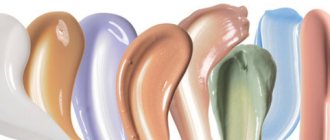Anti-aging skin care includes a variety of creams, serums, peelings, masks and other beauty products. Among the huge variety of cosmetics, we girls need to be able to choose really good products. For this, of course, it is useful to have a special education. But even if you are not strong in chemistry and medicine, understanding the composition will not be so difficult. Read what 5 ingredients you should avoid in anti-aging facial cosmetics.
Formaldehyde
This well-known preservative is often found in anti-aging cosmetics. For example, in whitening face masks. Its negative effects on the skin have long been proven by scientists, so many brands have already abandoned the use of formaldehyde in cosmetics. And in Japan and Sweden this dangerous component is strictly prohibited due to its toxicity.
When choosing anti-aging cosmetics for the face, make sure that the labels of the jars do not contain the words formaldehyde and formalin.
Formaldehyde
The presence of formaldehyde in cosmetics can be determined by the inscription Formaldehyde . However, most often cosmetics contain formaldehyde releasers, such as:
- Imidazolidinyl urea (imidazolidinyl urea)
- Diazolidinyl urea (diazolidinyl urea)
- DMDM hydantoin (DMDM-hydantoin)
- Sodium hydroxymethyl glycinate (sodium hydroxymethyl glycinate)
- 5-bromo-5-nitro-1,3-dioxane (5-bromo-5-nitro-1,3-dioxane, bronidox)
- 2-bromo-2-nitropropane-1,3-diol (2-bromo-2-nitropropane-1,3-diol, bronopol)
- Methenamine (methenamine)
- Quaternium-15 (quaternium-15)
- Benzylhemiformal (benzylhemiformal)
Formaldehydes in cosmetics are related to formaldehyde 27122
Properties of formaldehyde used in cosmetics:
Antibacterial . Formaldehyde effectively suppresses the activity of most known gram-positive and gram-negative bacteria, mold and yeast-like fungi, and prevents spoilage of cosmetics.
In medicine, formaldehyde is used as an antiseptic and a preservative for biological materials in laboratories; it can be found in ointments for excessive sweating.
Cosmetics with formaldehyde are stored in a closet, away from light. If storage rules are not followed, formaldehyde releasers contained in cosmetics will begin to rapidly release formaldehyde into the cream or shampoo, which can lead to exceeding the maximum permissible concentration of this substance.
What cosmetics contain formaldehyde?
- shampoo
- hair conditioner
- shower foam
- moisturizing cream for face and body
- face and body lotion
- nail polish
- Mascara
The use of cosmetics with formaldehyde is undesirable:
- in case of allergies
- for hypersensitive skin
- for skin diseases
- for bronchial asthma
- during pregnancy
What is formaldehyde?
Formaldehyde (methanal, formic aldehyde) is a strong-smelling, colorless gas, quite toxic, with very high activity against bacteria, fungi and some viruses. Formaldehyde is not only a chemically produced substance, this gas occurs in nature: formaldehyde is produced in the atmosphere in the spring and summer as a result of photochemical reactions under the influence of sunlight. The increased concentration of formaldehyde in the atmosphere can also be explained by the presence of large amounts of exhaust gases, especially in large cities.
Formaldehyde molecule in cosmetics 26346
A more widely known aqueous solution of formaldehyde is formalin, which is often used as a disinfectant and preservative liquid.
Formaldehyde is often used in the production of furniture, plastics, paints, film and photographic films, and as a cheap and very effective preservative in the pharmaceutical and cosmetics industries.
Formaldehyde in cosmetics
The composition of a cosmetic product is usually not formaldehyde or formalin itself, but chemical substances (releasers) containing formaldehyde molecules that can be slowly released and transferred into cosmetics as a result of the breakdown of releasers. The maximum permissible concentration of formaldehyde is taken to be the amount of this substance released from releasers into cream or shampoo. For oral hygiene, the concentration of formaldehyde in cosmetics is allowed not to exceed 0.1%, and for other cosmetics - not more than 0.2%. If the concentration of formaldehyde in cosmetics is less than 0.05%, the manufacturer is not required to indicate its presence in the list of ingredients; in other cases, the presence and concentration of a substance containing formaldehyde must be indicated on the label.
Where do formaldehydes come from for cosmetics?
Traditionally, formaldehyde is produced by a chemical oxidation reaction of methanol at atmospheric pressure of 1-2 MPa, very high temperature (about 650 ° C) and using a silver catalyst. It is also possible to produce formaldehyde from methane with a catalyst – aluminum phosphate. A new method for producing formaldehyde has recently been developed - using an iron-molybdenum catalyst, which will allow the production of formaldehyde without water content, so it is considered a very promising direction.
Formaldehyde is used not only for cosmetics 26977
How dangerous is formaldehyde?
Periodically, reviews appear in the literature on the effects of formaldehyde on the human body. It has been proven that in direct contact with formaldehyde, for example, while working in a chemical shop, this substance can cause severe skin irritation, and when inhaled, it can provoke the development of bronchial asthma, irritation of the mucous membrane of the eyes and nasopharynx. The carcinogenic effect of formaldehyde has not been scientifically confirmed, but there are suggestions that prolonged contact with substances containing formaldehyde can cause nervous disorders.
In some countries, formaldehyde in cosmetics is prohibited!
Regulatory organizations in most countries strictly limit the use of formaldehyde in cosmetics. For example, in Sweden and Japan, formaldehyde is generally prohibited from being included in cosmetics. In Russia, the use of formaldehyde as a preservative in cosmetics is practically not regulated at the state level. In the USA and European countries, formaldehyde is allowed to be used as a preservative in cosmetics that do not remain on the skin.
Aluminum acetate
A popular ingredient in anti-aging cosmetics is known for its antiseptic properties and is used as a stabilizer for the consistency of creams, serums and masks. At the same time, it causes dryness, irritation and significantly worsens the condition of the skin with constant use of cosmetics containing Aluminum acetate.
Some cosmetic brands have already stopped using aluminum acetate in their production. But still, most companies have not yet come up with a worthy replacement for this harmful component.
Glycerin
No matter how modern girls praise glycerin, it is worth remembering that it may be unsafe for anti-aging skin. A recognized humidifier can cause dehydration of the epidermis if the air humidity is below 65%.
In dry air conditions, for example in summer and in a stuffy office, glycerin does not act as a moisturizing component, but exactly the opposite. It draws moisture from the deepest layers of the skin to normalize the hydrobalance of the upper layers. A real crime against beauty!
Harmful and ineffective ingredients in cosmetics
Even a small concentration of harmful components in cosmetics, when used regularly, has a negative impact on health. Especially for sensitive and problematic skin.
Synthetic types of alcohol
Synthetic types of alcohol dry out the skin and have mutagenic properties, presumably causing throat cancer. In case of poisoning, dizziness and nosebleeds occur. Clinical observations showed that the high content of synthetic alcohols in face creams and body lotions led to the death of a quarter of the skin cells in test subjects in just two days of use. We avoid products with Ethyl-, Methyl-, Benzyl- and Isopropyl Alcohol. And also propylene glycol , which, as an additive E1520, is not toxic, but due to its hygroscopic properties, dehydrates the epidermis with regular use. Although in cosmetics it is stated as a humectant (humectant), giving skin smoothness and a glycerin substitute. The abbreviation PPG and PEG ( polyethylene glycol ) are among the first ingredients in the composition - a reason not to buy a dangerous drug.
If the amount of glycerin in a product is more than 40%, when the ambient air humidity is less than 65%, it begins to “pull moisture” from the deep layers of the skin to the surface
Synthetic types of alcohol
The result of oil refining, purified to White oil. It is odorless, colorless and does not oxidize for many years. Overall, an ideal product for the cosmetic and pharmaceutical industries. When added to cream, it creates an insulating layer on the skin, which makes it soft and velvety. The composition is designated as: Liquid paraffin, Paraffin oil. Or in the form of liquid petroleum jelly: Petrolatum liquid, Petroleum oil. There is an opinion that technical oil leads to blockage of pores and causes acne, can penetrate into the blood and negatively affect internal organs. The European Food Safety Agency concluded after a study that mineral oils are not toxic. And the carcinogenic properties of polycyclic aromatic hydrocarbons present in oil are completely eliminated due to high purification. Dermatologists express the opinion that if you abuse products with mineral oils, metabolic processes decrease, cell growth slows down, and the mechanisms of restoration and renewal slow down. The skin becomes thinner and dehydrated. Barrier functions are reduced. All this leads to rashes and pimples.
Silicones
They create a sheath on the hair shaft, providing silky curls by smoothing the cuticles, and a film on the skin, preventing natural moisture from escaping, protecting against environmental aggression. But at the same time they clog the pores, preventing toxins from escaping. And if a cosmetic product contains dangerous components such as preservatives, then silicone “seals” them to the surface of the skin, ensuring absorption due to the “greenhouse effect”. On the hair, silicone additives “attract” particles of dust and other contaminants, aggravating the greasy condition of the hair, which therefore has to be washed more often. Some silicones can only be washed with super-aggressive special shampoos. And if they are not there, then the film disrupts metabolic processes at the cellular level. They will be removed from the skin only with natural skin renewal, when the old epithelium sloughs off. The names of silicones end in –thicone: Dimethicon, Сyclomethicone, Phenyl Trimethicone. Or -silanol, -silicone, -siloxane.
Nitrosamines are radicals that, even with a single use, can cause mutagenic and carcinogenic effects. Affects liver cells, in high concentrations can lead to hemorrhage and coma
Neutralizing agents
Petroleum derivatives that correct PH levels: diethanolamine and triethanolamine (DEA and TEA). They cause allergic reactions and combine with other components to form nitrosamines.
Flavors
Fragrances are included in almost all cosmetic products. What do fragrance or parfume inscriptions conceal? They consist of thousands of synthetic substances, each of which is carcinogenic to a greater or lesser extent, and enhancers - phthalates (Phthalate), extremely toxic, which can even cause fetal rejection in pregnant women. Experiments prove that artificial aromatic compositions affect the central nervous system and may well be the cause of depression, irritability and chronic fatigue syndrome. When directed, they cause allergic reactions, cough, headache, nausea and vomiting. The most dangerous neurotoxic fragrances must be indicated by manufacturers in a separate line: cinnamyl alcohols, isoeugenol, citral, cinnamal, oakmoss extract, coumarin. But this rule is not always followed.
Dyes
Dyes , like aromatic compositions, are responsible for the attractiveness of cosmetic products. The brighter the color, the more toxic the product. The most dangerous are CI 61565, CI 61570, 11680. FD&C color preservatives (FDC-n) are also suspected of having a negative impact on health. Coal tar dyes can cause cancer.
Jacqueline Kennedy died at 65 from lymphoma, which was blamed not only on smoking, but also on dyeing her hair twice a month with dye containing coal tar.
AHA acids
They are able to reduce wrinkles and pigmentation by accelerating the exfoliation of dead cells of the stratum corneum, which stimulates the renewal and synthesis of collagen. But the constant use of “fruit” acids violates the protective, barrier properties of the skin, which leads to permeability and vulnerability to dangerous substances, and premature aging.
Aluminum
Aluminum in the form of sulfate and acetate is a common culprit of peeling, itching and irritation. Constant use of deodorants, especially gel ones, and decorative eye shadows can cause tumors. The metal is not excreted from the body.
Aluminum oxide, designated on cosmetic packaging as alumina, causes irritation of mucous membranes, dryness and activation of gland secretion, the formation of numerous ulcers and rashes on the skin.
Acetamide MEA
Acetamide MEA is found in decorative cosmetics: lipstick, blush, retaining moisture in the product. Presumably the cause of nasopharyngeal cancer. Penetrates the liver and kidneys.
Bentonite
Bentonite - added to powder, blush, foundation, ready-made masks. A type of clay that becomes gel-like when mixed with water. It is believed to rid the skin of toxins. But recent study results indicate that highly plastic clay itself is toxic, comedogenic, and disrupts the hydro-lipid balance.
UV filters
UV filters , when oxidized, cause cancer. Therefore, wash off and reapply sunscreen cosmetics every two hours of exposure to the sun. If during the day you were in the open sun for a total of a couple of hours, then you do not need to adjust your makeup. Banned in Europe: Benzophenone, Oxybenzon. Next up: Homomenthylsalicylat, Octocrylene.
Collagen, elastin and biotin
Collagen, elastin and biotin are not harmful, but ineffective components in cosmetics. To penetrate the skin, the molecular weight of the ingredient must be less than 3 thousand a.u. m. To be inside the cage - 800 au. m. It is doubtful that the structure of the skin will be significantly improved by foreign substances, the specific gravity of molecules of which is more than 10 thousand units. But elastin and collagen create a breathable film on the surfaces of the hair and epidermis, which helps retain and absorb other components: both beneficial and harmful. Advertising deception also includes assurances of the rejuvenating properties of liposomes in creams, which cannot “revive” an aging cell. Although they are capable of delivering beneficial substances deep into the skin and enveloping it from the outside with a protective layer.
Harmful components are contained in all types of cosmetics, even in children's products. They are used because they are cheap and make the use of the drug pleasant. Remember the most dangerous substances and avoid them if possible. Do not overuse cosmetics, especially cheap ones. Don’t be lazy to prepare folk care recipes, because only home remedies are completely natural and free from “chemicals”.
